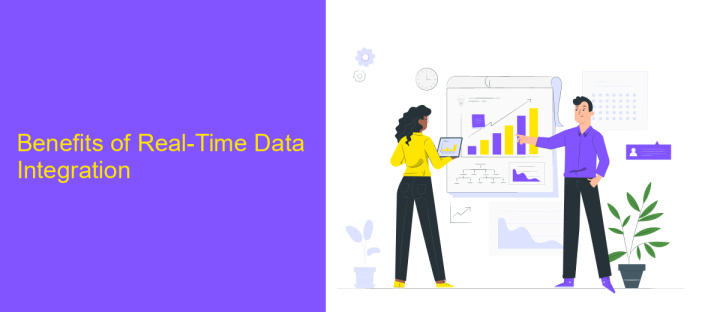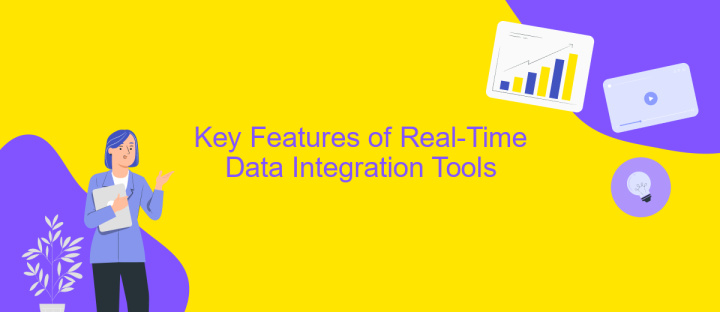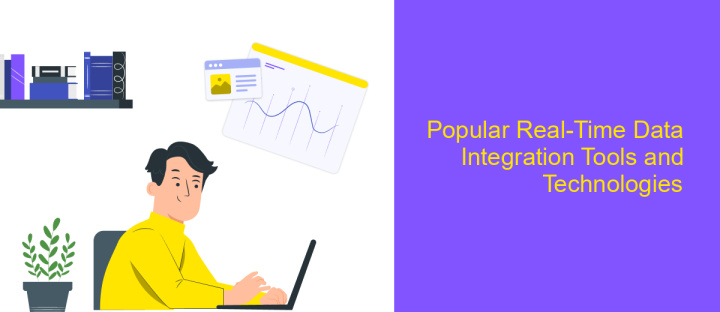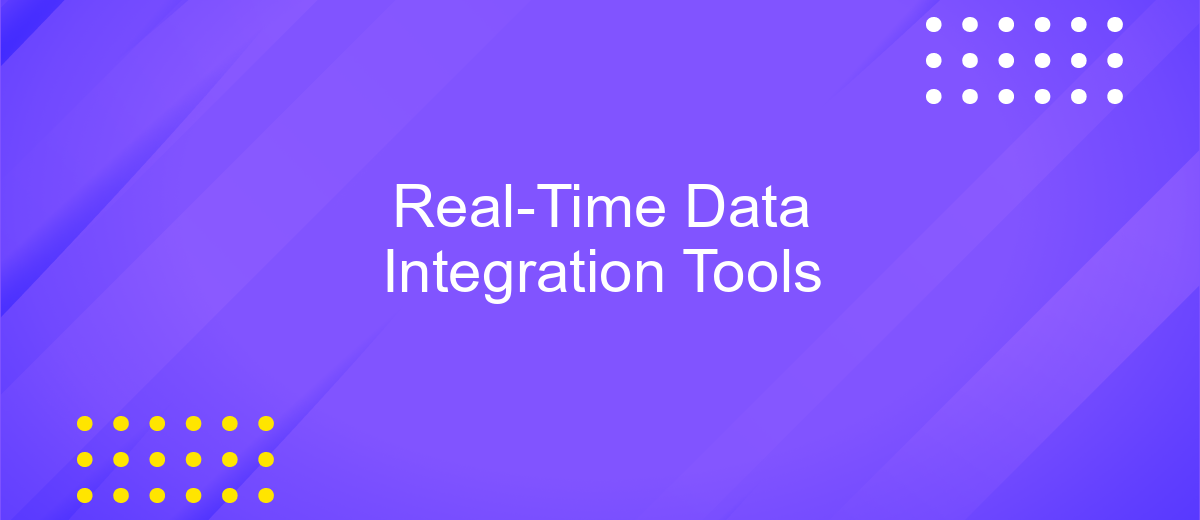Real-Time Data Integration Tools
In today's fast-paced digital landscape, the ability to seamlessly integrate and analyze data in real-time is crucial for businesses striving to maintain a competitive edge. Real-time data integration tools empower organizations to connect disparate data sources, enabling instant insights and informed decision-making. This article explores the essential features, benefits, and considerations when selecting the right real-time data integration tools to enhance operational efficiency and drive business growth.
Introduction to Real-Time Data Integration
In today's fast-paced digital landscape, businesses are increasingly reliant on real-time data integration to drive informed decision-making and enhance operational efficiency. This process involves the seamless aggregation and synchronization of data from various sources to ensure that the most current and relevant information is available for analysis and action. As organizations strive to remain competitive, the ability to integrate data in real time has become a crucial component of their data strategy.
- Real-time data integration enables immediate access to up-to-date information, facilitating quick responses to market changes.
- It supports enhanced customer experiences by providing personalized and timely interactions.
- Organizations can optimize their operations by leveraging real-time insights for process improvements.
- It helps in maintaining data accuracy and consistency across different platforms and applications.
- Real-time integration can drive innovation by enabling the rapid development of new data-driven services and products.
As technology continues to evolve, the demand for efficient real-time data integration solutions is only expected to grow. Companies must adopt robust tools and strategies to harness the full potential of their data, ensuring they remain agile and responsive in a dynamic business environment. By prioritizing real-time integration, businesses can unlock new opportunities for growth and success.
Benefits of Real-Time Data Integration

Real-time data integration offers significant advantages for businesses seeking to maintain a competitive edge in today's fast-paced digital environment. By enabling immediate access to up-to-date information, companies can make informed decisions quickly, enhancing operational efficiency and responsiveness. This instant access to data facilitates better customer experiences, as businesses can tailor their services and products based on real-time insights, thus improving customer satisfaction and loyalty.
Furthermore, real-time data integration reduces the risk of errors and discrepancies that often arise from batch processing or manual data handling. Tools like ApiX-Drive simplify the integration process by providing a user-friendly platform to connect various applications and automate data flows without the need for extensive technical knowledge. This not only saves time and resources but also ensures data consistency and accuracy across all systems. As a result, organizations can focus on strategic initiatives, driving innovation and growth while maintaining a seamless data ecosystem.
Key Features of Real-Time Data Integration Tools

Real-time data integration tools are essential for businesses that require immediate access to data from various sources. These tools enable seamless data flow, ensuring that information is up-to-date and readily available for decision-making processes. They are designed to handle data from diverse platforms, allowing organizations to respond quickly to changes and maintain a competitive edge.
- Low Latency: These tools ensure minimal delay in data processing, allowing for near-instantaneous data updates.
- Scalability: Capable of handling increasing volumes of data as the organization grows, without compromising performance.
- Data Transformation: Real-time tools offer robust data transformation capabilities, ensuring data is in the correct format for analysis.
- Error Handling: Advanced error detection and correction mechanisms maintain data integrity and reliability.
- Security: Implement strong security protocols to protect sensitive data during integration processes.
By leveraging these key features, businesses can ensure that their data integration processes are efficient, reliable, and secure. Real-time data integration tools not only enhance operational efficiency but also support strategic decision-making by providing accurate and timely data insights.
Popular Real-Time Data Integration Tools and Technologies

In today's fast-paced digital landscape, real-time data integration tools have become essential for businesses seeking to harness the power of instant data access and analysis. These tools enable organizations to seamlessly integrate data from various sources, providing a unified view that supports timely decision-making and operational efficiency.
Several technologies are leading the charge in the realm of real-time data integration. These solutions offer diverse functionalities, catering to different business needs and technical environments. From cloud-based platforms to open-source options, the choice of tool can significantly impact the effectiveness of data strategies.
- Apache Kafka: A robust platform for building real-time data pipelines and streaming applications.
- Amazon Kinesis: A cloud service for real-time data processing and analytics on AWS.
- Google Cloud Dataflow: A fully managed service for stream and batch data processing.
- Talend: Offers real-time data integration and transformation capabilities with a user-friendly interface.
- Confluent: Provides a comprehensive platform for data streaming built on Kafka.
As organizations continue to prioritize agility and responsiveness, the adoption of real-time data integration tools is expected to grow. By leveraging these technologies, companies can ensure they remain competitive in an increasingly data-driven world.
- Automate the work of an online store or landing
- Empower through integration
- Don't spend money on programmers and integrators
- Save time by automating routine tasks
Choosing the Right Real-Time Data Integration Tool for Your Needs
When selecting a real-time data integration tool, it's essential to evaluate your specific needs and objectives. Consider the volume and variety of data you need to integrate, as well as the speed and frequency of data updates required. If your business relies on seamless data flow between multiple applications, look for tools that offer robust connectivity options and support for diverse data sources. Scalability is another crucial factor, ensuring that the tool can handle increasing data loads as your business grows. Additionally, assess the ease of use and setup time, as a user-friendly interface can significantly reduce the implementation time and cost.
ApiX-Drive is an excellent option for those seeking a flexible and efficient integration solution. It allows users to connect various applications without extensive coding knowledge, facilitating real-time data synchronization. With its intuitive interface and wide range of supported applications, ApiX-Drive can streamline workflows and enhance productivity. Moreover, the platform's ability to automate routine tasks ensures that your team can focus on more strategic initiatives. By carefully considering these factors, you can choose a tool that aligns with your business requirements and optimizes your data integration processes.
FAQ
What is real-time data integration?
Why is real-time data integration important for businesses?
What are the challenges of implementing real-time data integration?
How can businesses automate real-time data integration processes?
What should be considered when choosing a real-time data integration tool?
Do you want to achieve your goals in business, career and life faster and better? Do it with ApiX-Drive – a tool that will remove a significant part of the routine from workflows and free up additional time to achieve your goals. Test the capabilities of Apix-Drive for free – see for yourself the effectiveness of the tool.


